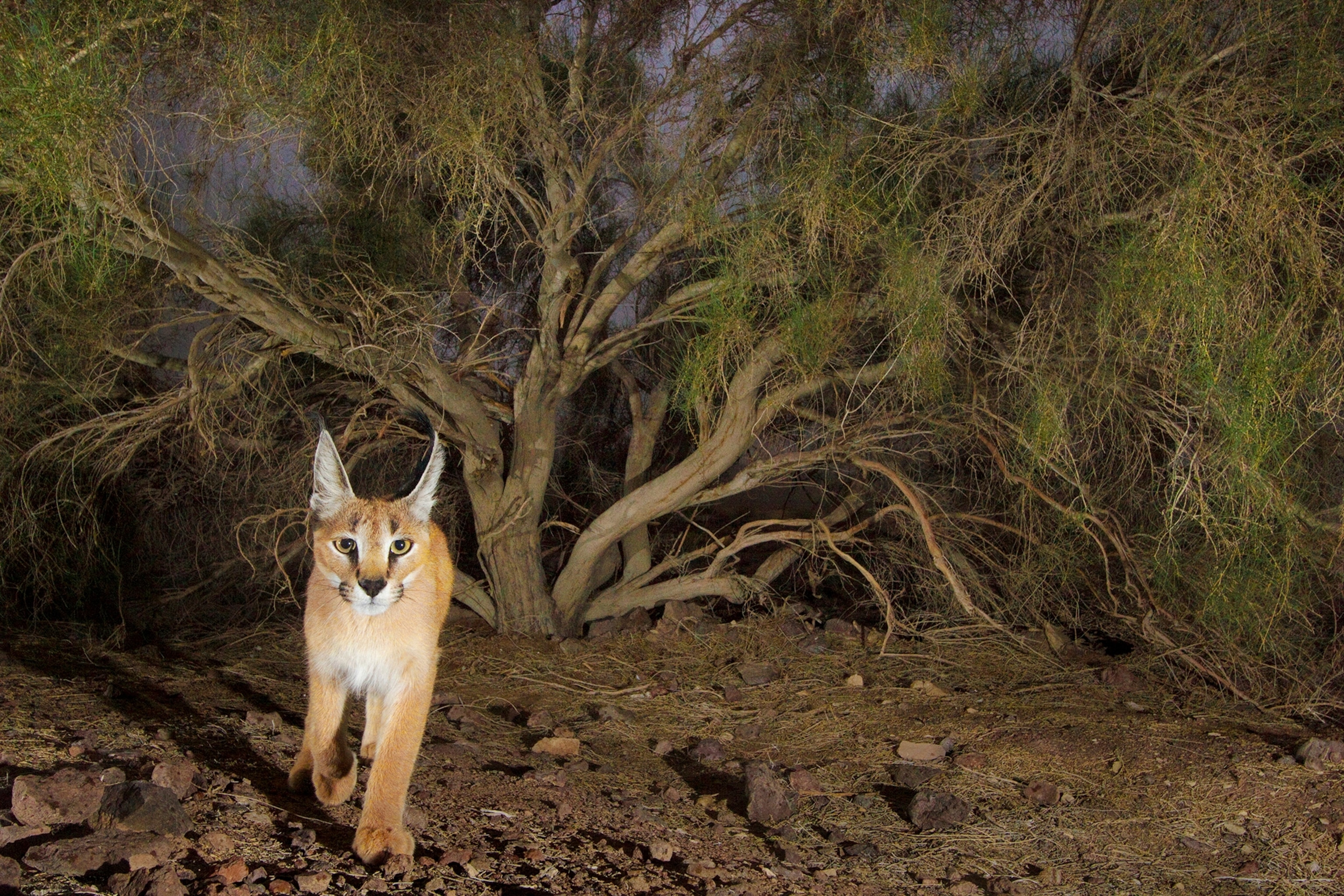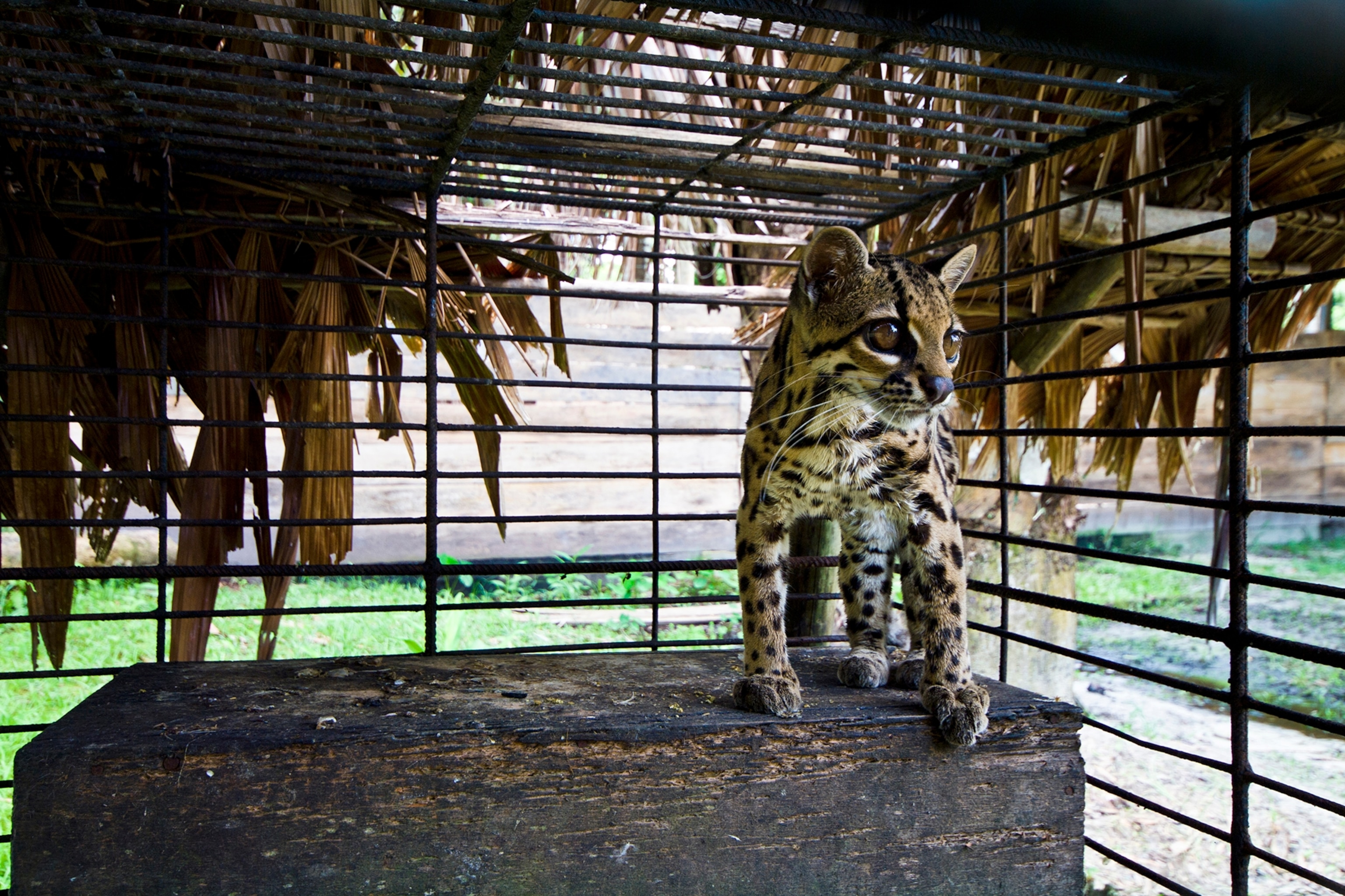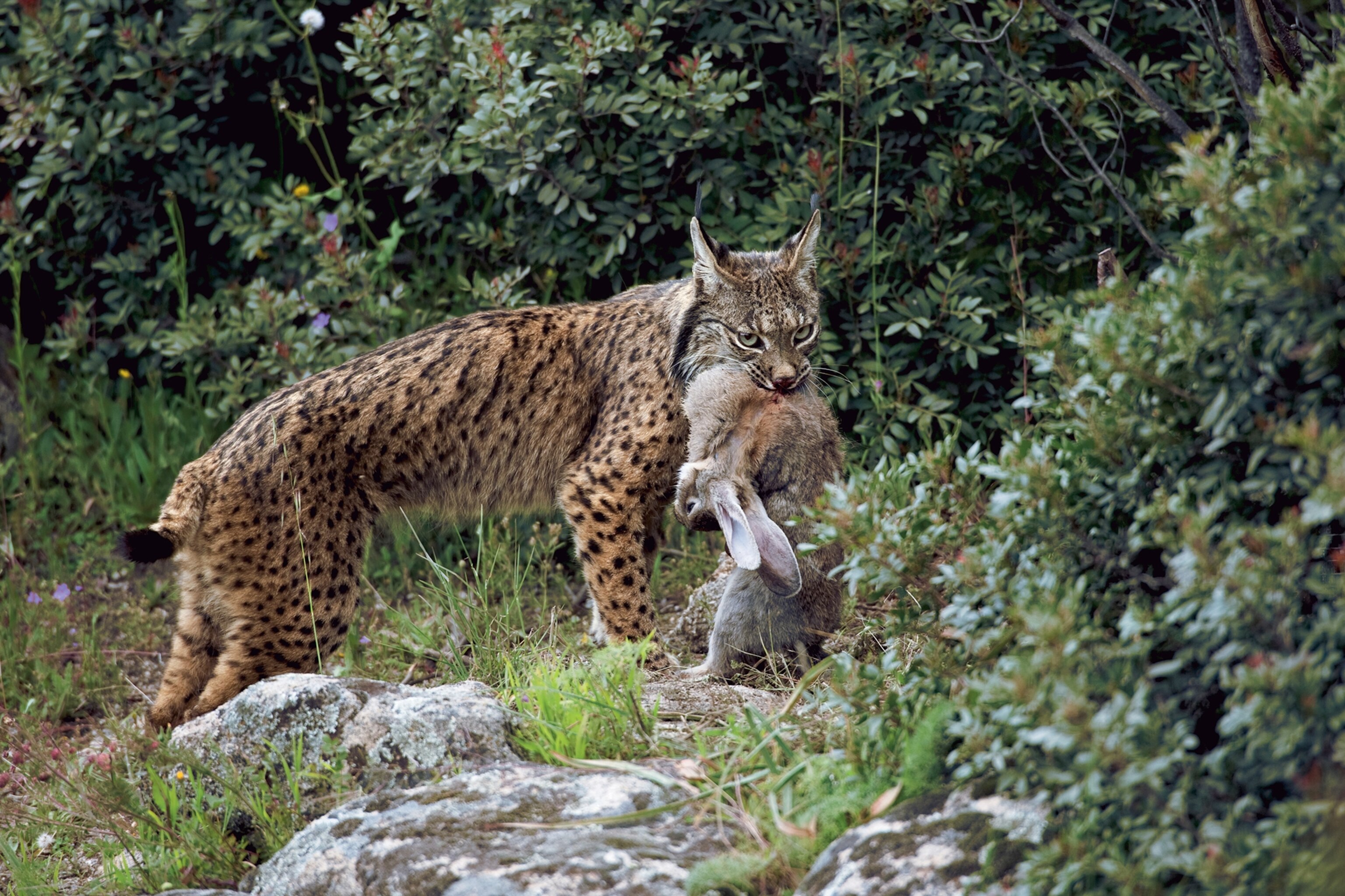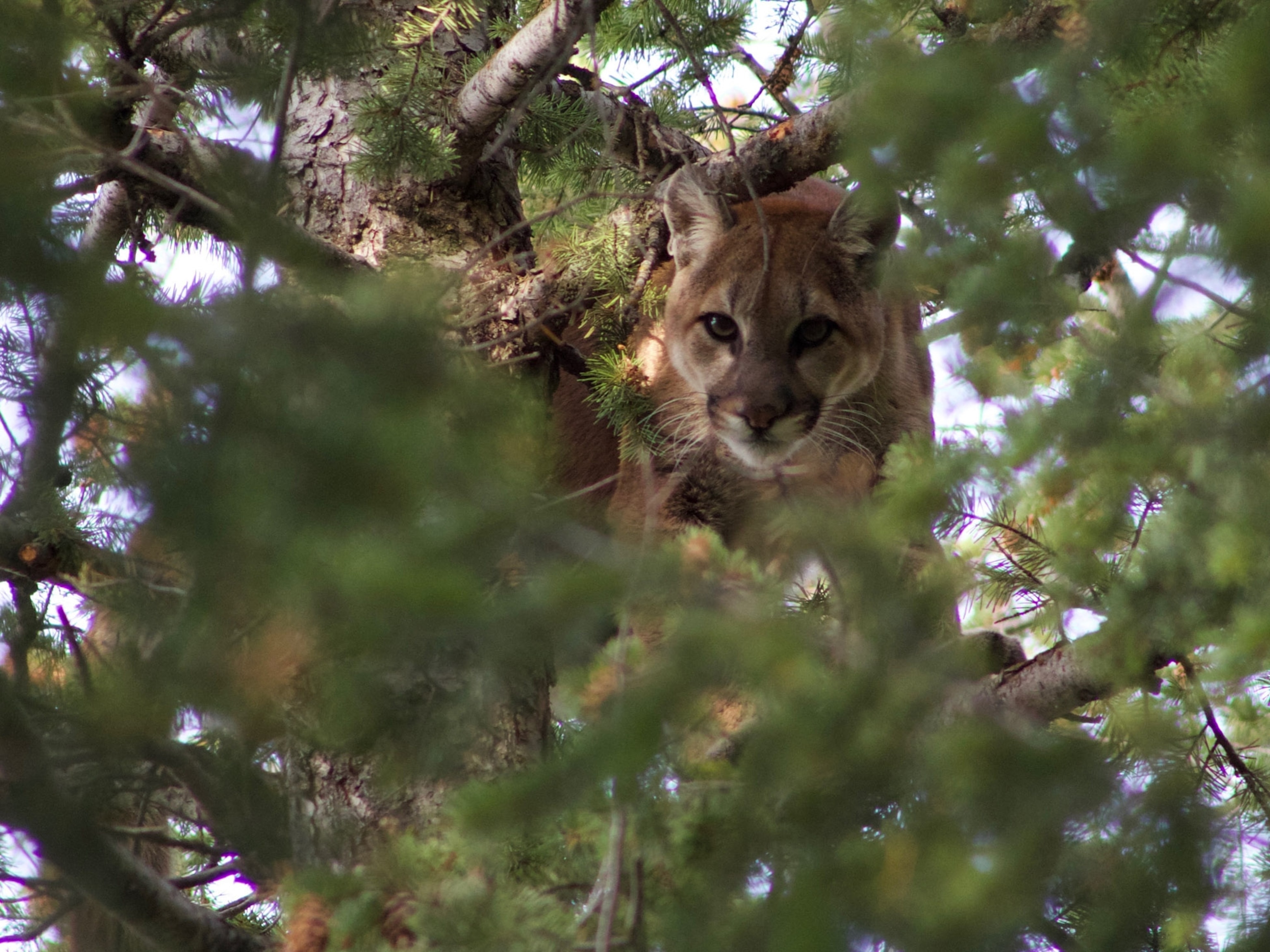
Cougar leftovers are home to hundreds of beetle species
The big cats play a surprising role in shaping their ecosystem, a new study says.
When a cougar takes down a mighty elk, it may look like the end of a life. But it’s actually a beginning for hundreds of other species.
Even though these big cats can top out at well over 100 pounds, they can’t even come close to finishing all the meat on a 700-pound elk. And what’s left serves as a surprisingly diverse oasis for countless other organisms who rely on rotting flesh to survive, a new study says. (Read why insects rule the world.)
In 2016 in the southern Greater Yellowstone Ecosystem, scientists used pitfall traps to collect beetle specimens from 18 cougar kills. Once they’d determined the abundance of individual beetles and their species, the team then compared these assemblages with those collected at control sites 65 feet away.
The results were astonishing.
In all, the team collected over 20,000 beetles from the kill sites versus just over 4,000 beetles from the areas without decaying carcasses. More than half of those were identified as northern carrion beetles, though the researchers counted 215 species of beetle from eight families in total.
“It really speaks to the complexity of what’s happening at these sites,” says study co-author Mark Elbroch, cougar director for the conservation group Panthera.

“We found all these species that I didn’t even know existed,” says Elbroch, who is also a National Geographic Society Explorer.
A home of rotting flesh
Much of the research on cougar kills has focused on bigger animals; an earlier study by Elbroch revealed that 39 species of birds and mammals also visit kill sites, including black bears, deer mice, and Steller’s jays.
This time the scientists chose to target beetles—which are easy to trap and identify—to get an idea of what’s happening on a smaller level. (Explore Yellowstone as never before in National Geographic magazine.)
Interestingly, the scientists discovered beetles from the family Curculionidae, which are primarily considered plant-eaters. It may be that these vegetarians gorge themselves on the stomach contents of the elk or deer.
The scientists also discovered beetles that are specialized hunters of slugs and snails, which can be found underneath the carcasses in abundance. They also discovered other insects: “If it’s a warm season, you can have these carcasses that are just inches deep in maggots,” Elbroch says.
All of this points to the fact that these carcasses are not simply food sources, but entire ecosystems for invertebrates.
“These carcasses are their homes. They are the places where they seek their mates. They’re the places where they raise their young and where they hide from predators,” says Elbroch, whose study was published recently in the journal Oecologia.
Look what the cat dragged in
All of which brings us to an interesting point.
If cougar kills create habitat for beetles, then it might be time to start thinking of the predators as ecosystem engineers, a term usually reserved for animals that physically change their environment, like beavers, termites, and elephants.
Justin Wright, a biologist at Duke University who has studied ecosystem engineers for decades, says the study’s conclusions are sound—but he’s much less interested these days in being the gatekeeper of what a species is or isn’t.
Rather, he argues, it’s more important that we keep teasing apart the relationships between seemingly unrelated species, as this study has done. (Peek inside the strange, secret world of bugs.)
See Our Favorite Pictures of Cats You've Never Heard Of














Similarly, Wright wonders what would happen to the beetles if, for some reason, mountain lions were to disappear. After all, elk and deer and other large animals would still die eventually, right?
According to Elbroch, the difference is that while large ungulates can obviously die all year long, most go down in winter, when most insects are scarce. Similarly, cougars create a unique kind of carcass, because they do not consume the whole animal, as a bear might, nor do they dismember the carcass as happens with wolf kills.
Elbroch says he hopes to change the way we think about cougars.
“We could say that they’re terrible animals because they’re killing a bunch of deer,” he says, “or we could say they’re amazing animals because they’re supporting all of this biodiversity.”
You May Also Like
Go Further
Animals
- Octopuses have a lot of secrets. Can you guess 8 of them?
- Animals
- Feature
Octopuses have a lot of secrets. Can you guess 8 of them? - This biologist and her rescue dog help protect bears in the AndesThis biologist and her rescue dog help protect bears in the Andes
- An octopus invited this writer into her tank—and her secret worldAn octopus invited this writer into her tank—and her secret world
- Peace-loving bonobos are more aggressive than we thoughtPeace-loving bonobos are more aggressive than we thought
Environment
- This ancient society tried to stop El Niño—with child sacrificeThis ancient society tried to stop El Niño—with child sacrifice
- U.S. plans to clean its drinking water. What does that mean?U.S. plans to clean its drinking water. What does that mean?
- Food systems: supporting the triangle of food security, Video Story
- Paid Content
Food systems: supporting the triangle of food security - Will we ever solve the mystery of the Mima mounds?Will we ever solve the mystery of the Mima mounds?
- Are synthetic diamonds really better for the planet?Are synthetic diamonds really better for the planet?
- This year's cherry blossom peak bloom was a warning signThis year's cherry blossom peak bloom was a warning sign
History & Culture
- Strange clues in a Maya temple reveal a fiery political dramaStrange clues in a Maya temple reveal a fiery political drama
- How technology is revealing secrets in these ancient scrollsHow technology is revealing secrets in these ancient scrolls
- Pilgrimages aren’t just spiritual anymore. They’re a workout.Pilgrimages aren’t just spiritual anymore. They’re a workout.
- This ancient society tried to stop El Niño—with child sacrificeThis ancient society tried to stop El Niño—with child sacrifice
- This ancient cure was just revived in a lab. Does it work?This ancient cure was just revived in a lab. Does it work?
- See how ancient Indigenous artists left their markSee how ancient Indigenous artists left their mark
Science
- Do you have an inner monologue? Here’s what it reveals about you.Do you have an inner monologue? Here’s what it reveals about you.
- Jupiter’s volcanic moon Io has been erupting for billions of yearsJupiter’s volcanic moon Io has been erupting for billions of years
- This 80-foot-long sea monster was the killer whale of its timeThis 80-foot-long sea monster was the killer whale of its time
- Every 80 years, this star appears in the sky—and it’s almost timeEvery 80 years, this star appears in the sky—and it’s almost time
- How do you create your own ‘Blue Zone’? Here are 6 tipsHow do you create your own ‘Blue Zone’? Here are 6 tips
Travel
- This town is the Alps' first European Capital of CultureThis town is the Alps' first European Capital of Culture
- This royal city lies in the shadow of Kuala LumpurThis royal city lies in the shadow of Kuala Lumpur
- This author tells the story of crypto-trading Mongolian nomadsThis author tells the story of crypto-trading Mongolian nomads
- Slow-roasted meats and fluffy dumplings in the Czech capitalSlow-roasted meats and fluffy dumplings in the Czech capital




